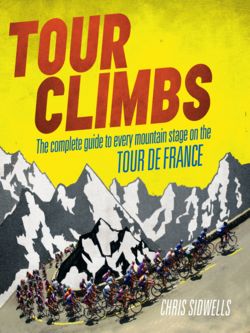Читать книгу Tour Climbs: The complete guide to every mountain stage on the Tour de France - Chris Sidwells - Страница 8
Going into the mountains
ОглавлениеFrance has four mountain areas; in order of increasing height, the Vosges, the Massif Central, the huge peaks of the Pyrenees and the giant Alps. To see how cyclists would fare in them, the organisers decided to include a stage through the Vosges in the 1905 race, and to visit the very edge of the Alps.
They had climbed the Col de la Republique during the first Tour, but that is a pass over the low shoulder of a mountain range, and there was no way around it. Now though, the riders would take on a real mountain, virtually crossing its summit, and its name was the Ballon d’Alsace.
© Universal/TempSport/Corbis
In his editorial before the race, Desgrange predicted that no competitor would be able to ride all the way to the top. They would have to dismount and walk for at least part of it, he thought. But Ren Pottier proved him wrong. He was the only one to do it, but Pottier pedalled all the way to the top. He even overtook Desgrange, who was sitting in the lead motor vehicle at the head of the race.
The effort he made destroyed Pottier’s chances. He was caught by other more prudent riders on the descent and later forced to retire from the stage through exhaustion. But as the riders pedalled on to the stage finish in Besancon, right on the edge of the Jura, Pottier had made a point to Desgrange
On the next but one stage the race climbed the Col Bayard, while travelling from the Alpine gateway city of Grenoble to Toulon on the Mediterranean coast. Everyone wanted to know if the riders would beat the stage coach that went over the climb from Grenoble and south to Gap. The coach was drawn by six horses on the flat and ten on the climbs, but the riders beat it by hours, and then carried on to Toulon.
Before the first Tour de France the daily circulation of L’Auto was 140,000. By 1910 the race had grabbed people’s interest to the point where Desgrange was selling 300,000 copies a day. But he wasn’t satisfied with that. The mountains were a big success. The pedalling heroes could conquer them, so in 1910 the Father of the Tour planned an epic stage, a stage to top all others, a stage that would capture the imaginations of everyone in France.
It was 326 kilometres long, it ran east to west from Luchon to Bayonne and crossed some of the most famous mountain passes in the Pyrenees; the Col de Peyresourde, Col d’Aspin, Col du Tourmalet and Col d’Aubisque. Almost no one had climbed these passes on a bike, and certainly no one had climbed one after the other on a single ride. In 1910 there were passes used by mountain people to get from one valley to the next, and often they were not much more than rutted tracks.
© Universal/TempSport/Corbis
It was a big adventure, and one guaranteed to make L’Auto the number one sports publication in France, but the thought of the challenge that lay ahead of the riders filled Desgrange and his staff with dread. Desgrange wasn’t any more at ease when he drove to the top of the Peyresourde to see the riders on the first climb.
He had an anxious wait. It was the first time that Desgrange had seen the climb. All he had to go on before were reports from his staff, who had visited the Pyrenees to see if the stage was possible. He learned that morning that there had been reports of bear attacks in the area. The news didn’t make him feel any better while he waited
Then he saw a dishevelled figure trudging towards him pushing a bike. It was a Tour de France rider, but Desgrange couldn’t identify him as he was covered in mud and he refused to speak to the race organiser. The next rider was easy to identify, and had a little more to say. He was Octave Lapize, a great rider and one of the favourites to win the 1910 Tour. Desgrange asked him what had happened to the others, but Lapize looked straight through him and spat out a single word: “Murderer!”
Desgrange loved that. He once said that his perfect Tour de France would have only one finisher, one hero who had battled through it all to the end. Lapize won the first Pyrenean stage at an average speed of 23 kph, and over 40 riders managed to haul themselves over the mountains, the last three admittedly over seven hours behind the winner. Every rider hated Desgrange, but no one had died. His race was now the most important and most popular sporting event in France. The mountains would be part of it for ever.
